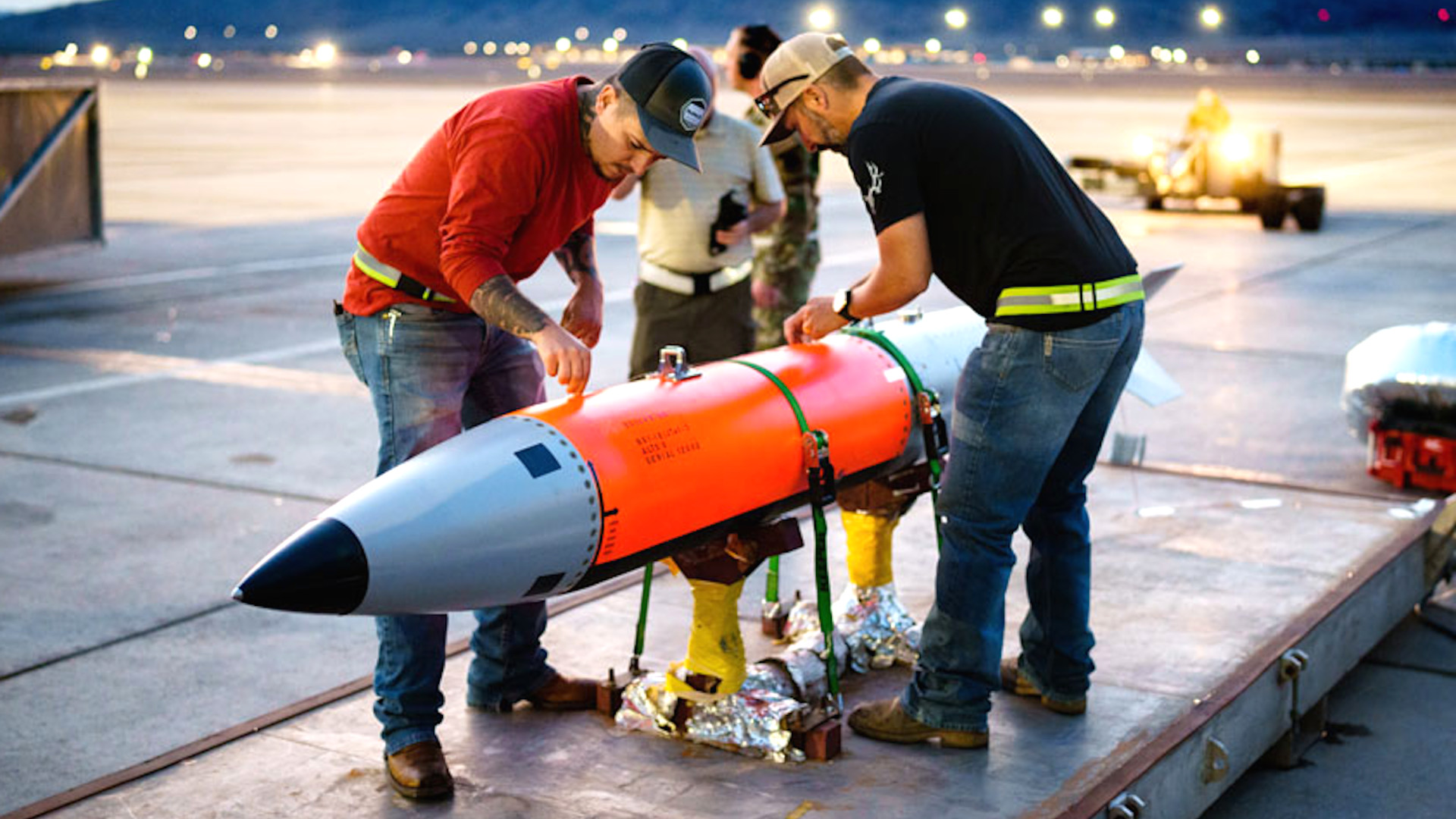The Pentagon says it wants a higher-yield nuclear-gravity bomb based on the B61-12 design. The stated purpose of the B61-13 would be to offer more capability against especially hardened facilities, like underground strategic command and control centers, and larger area targets.
The U.S. military announced its plans for the B61-13 today, noting that the start of the development of this weapon will be dependent on “Congressional authorization and appropriation.”
“The B61-13 would take advantage of the current, established production capabilities supporting the B61-12, and would include the modern safety, security, and accuracy features of the B61-12,” according to a Pentagon press release. “The B61-13 would be deliverable by modern aircraft, strengthening deterrence of adversaries and assurance of allies and partners by providing the President with additional options against certain harder and large-area military targets. It would replace some of the B61-7s in the current nuclear stockpile and have a yield similar to the B61-7, which is higher than that of the B61-12.”
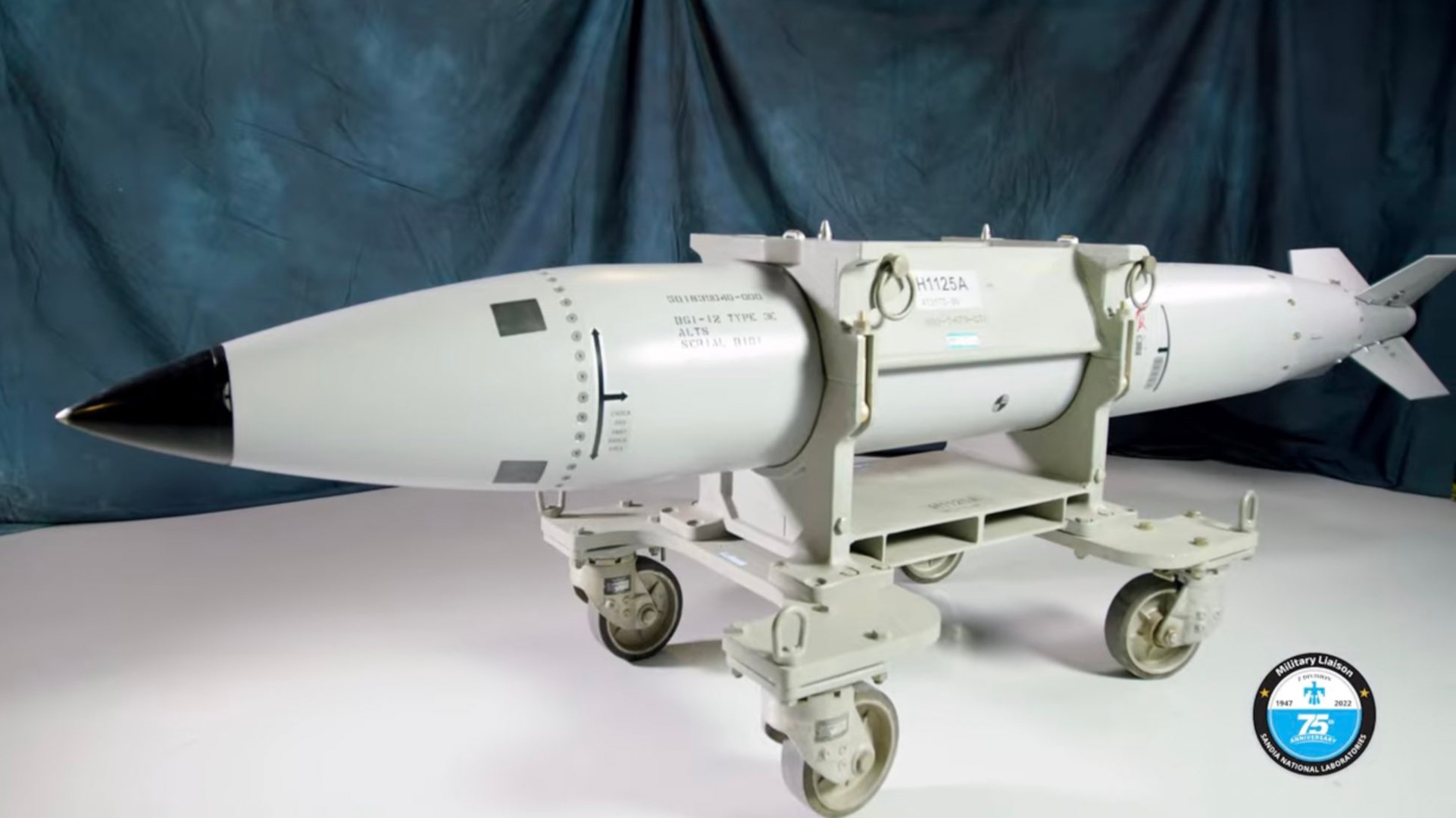
The B61-7, like all B61 variants, is a so-called “dial-a-yield” design that can be set to detonate with various degrees of explosive force. The highest setting for this version is reportedly between 340 and 360 kilotons, which makes it one of the most powerful B61 versions. Sources differ on whether the B61-11, which we will discuss more in this story, has yield settings that are identical to that of the B61-7, or is slightly more powerful, with a 400-kiloton top setting. The B61-12’s maximum yield is reportedly 50 kilotons.
You can read all about the entire B61 family and its evolution here.
“The B61-13 will provide the President with additional options against certain harder and
large-area military targets, even while the Department works to retire legacy systems
such as the B83-1 and the B61-7,” a separate fact sheet the Pentagon released today adds. The B83-1 is a much more powerful nuclear gravity bomb with a reported 1.2 megaton yield.
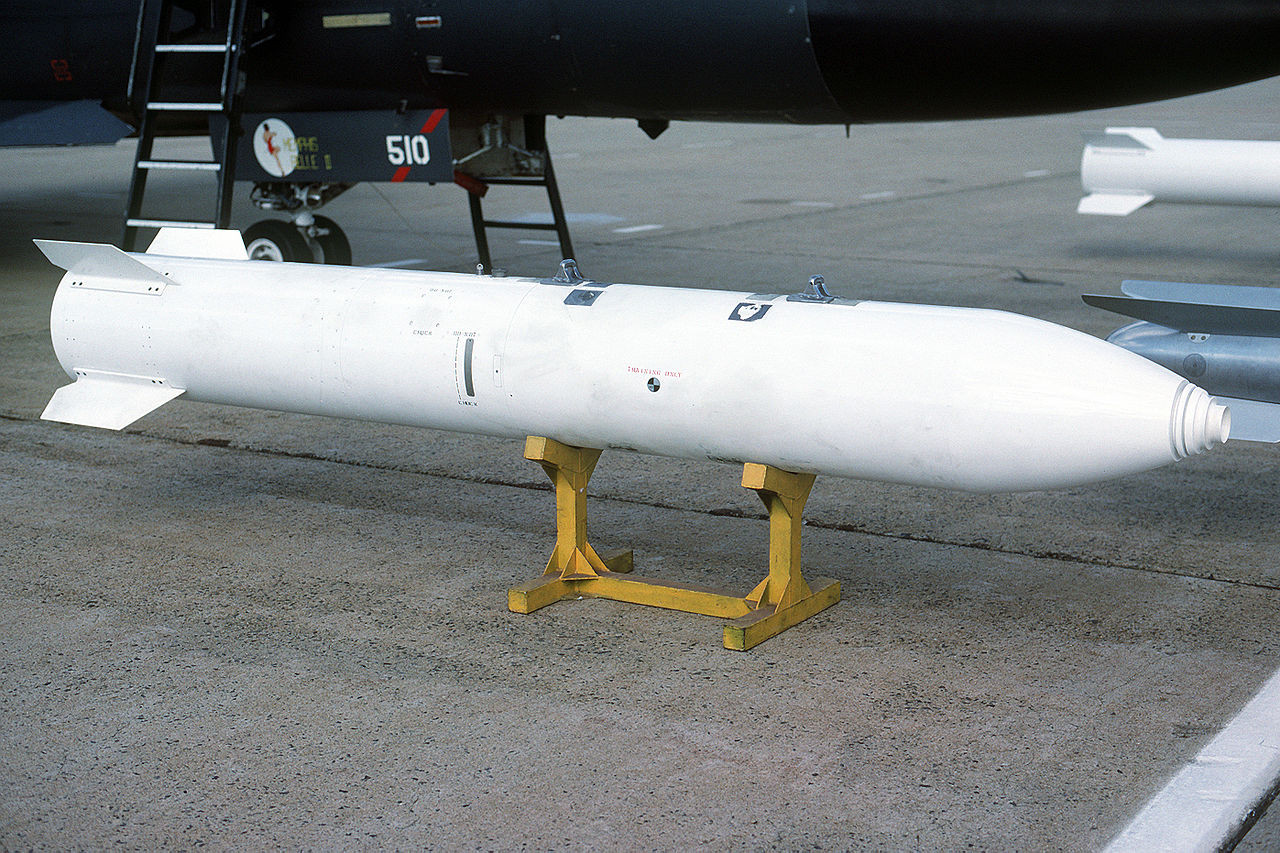
The development of yet another B61 variant specifically to provide capabilities akin to the B61-7 is immediately interesting as this was one of the three variants the U.S. military previously said would be supplanted by the B61-12. Older B61-3 and 4 versions are also being replaced by this variant. In the past, it was also understood that the B61-12 would lead to the removal of the B61-10 from service.
The B61-12 is not an entirely new weapon, but instead leverages components from multiple older B61 types and combines them with various new and improved features. The B61-13 is expected to be produced in a similar manner. In addition, fewer B61-12s would be made if work on the B61-13 goes ahead, meaning the planned future size of the total B61 inventory will remain unchanged.
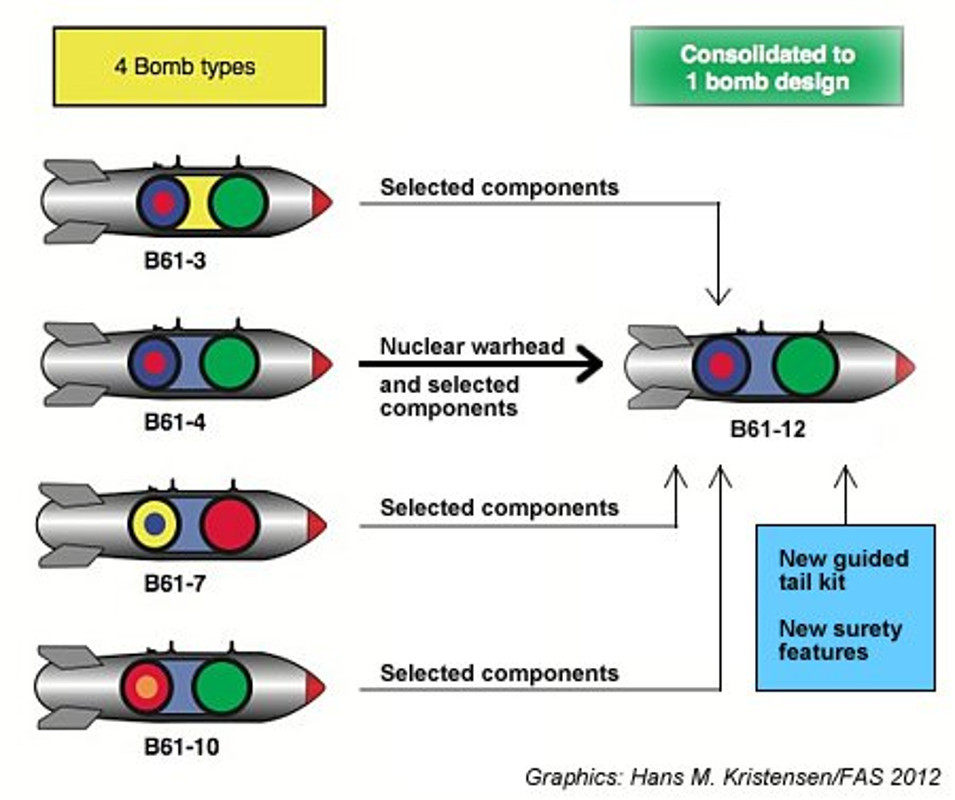
The most notable new capability found on the B61-12, each one of which is famously expensive, costing more than its weight in gold, is its precision guidance package. However, not all aircraft that are slated to be able to carry this variant, particularly ones operated by NATO allies, will be unable to utilize that functionally, as The War Zone reported on in detail last year. The B61-13 will be reserved for U.S. military use only, according to the Federation of American Scientists think tank.
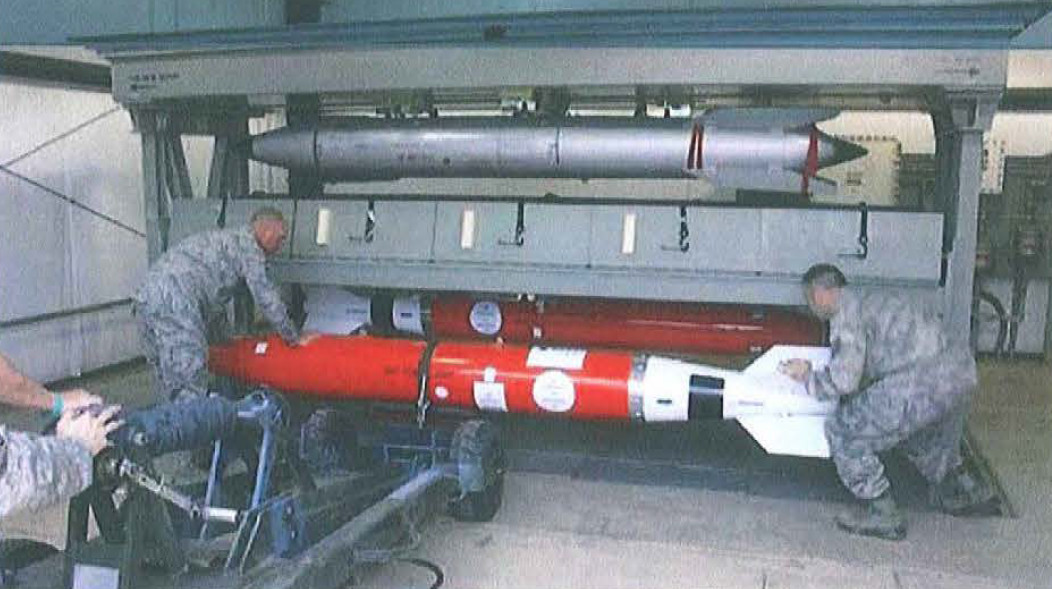
It had been suggested in the past that the B61-12 might also be able to replace the B61-11, which is a highly specialized deep-penetration version designed to get after hardened subterranean targets, as well as the B83-1, thanks to its added precision. The B61-12 also has small rocket motors positioned around the rear of its body, as can be seen in the video below, to give it spin stabilization, further improving its accuracy.

The theory was that, even though it might not be able to penetrate like the B61-11 or have a yield anywhere approaching that of the B83-1, the ability to focus its blast more specifically could allow it to neutralize more deeply buried targets. The B83-1’s capabilities against that same target set are purely a product of its megaton-class yield.
However, the Pentagon’s 2018 Nuclear Posture review, which came under President Donald Trump, made it clear that the B83-1 and B61-11 would “be retained in the stockpile, at least until there is sufficient confidence in the B61-12 gravity bomb that will be available in 2020.” This had also reversed President Barack Obama’s administration’s stated plans to eliminate the B83-1 entirely.
President Joe Biden’s Administration declined to release a full unclassified copy of its 2020 Nuclear Posture Review, but the newly announced nuclear bomb plans would seem to show that this level of confidence in the B61-12’s abilities was not achieved. The Pentagon’s reasons for pursuing the B61-13 may well turn out to be less about B61-7 and more about providing a new pathway to replacing the B83-1.
The Pentagon’s B61-13 fact sheet also makes no mention of the B61-11 at all, indicating that version will remain in the stockpile for the foreseeable future. U.S. officials have said that the B61-13 does not rule out the possibility of another future B61 variant specifically to replace the B61-11, according to the Federation of American Scientists.
“While the B61-13 will provide the President with additional options against certain harder and large-area military targets, the Department of Defense will separately continue its work to complete and implement a comprehensive strategy for defeat of hard and deeply buried targets, as directed in the Nuclear Posture Review,” the fact sheet released today said.
Beyond trying to finally get the B83-1 out of the stockpile, other factors might have played into the decision to pursue the B61-13, including construction in Russia and China on subterranean command and control and other facilities. In 2021, Russian President Vladimir Putin confirmed construction of a new nuclear command and control bunker was almost complete. Russia already has two other known critical strategic nodes built underneath mountains.
For its part, China’s People’s Liberation Army (PLA) has notably been building huge hardened silo fields for intercontinental ballistic missiles. This is on top of a slew of underground facilities in China that house air, sea, and other key assets.
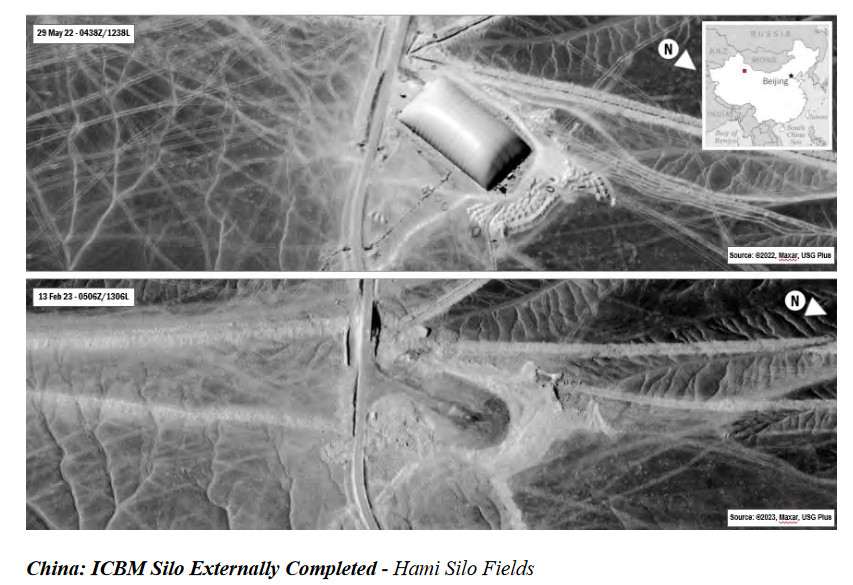
The Pentagon’s recently released annual report on Chinese military and security developments specifically highlights deeply buried military infrastructure in that country:
“The PLA maintains a robust and technologically advanced underground facility (UGF) program to conceal and protect all aspects of its military forces, including C2, weapons of mass destruction, logistics, and modernized missile, ground, air, and naval forces. The PRC has thousands of UGFs and constructs more each year. These UGFs are central to The PRC’s counter-intervention and power projection efforts, enabling the PLA to protect valuable assets from the effects of missile strikes and to conceal military operations from adversaries. The PRC’s emphasis on strategic deterrence has also contributed to the construction of UGFs for the country’s nuclear forces, which aims to survive an initial nuclear first-strike by an adversary.”
“The PRC began to update and expand its military UGF program in the mid- to late-1980s. This modernization effort took on renewed urgency following the PRC’s observation of U.S. and Coalition air operations during the 1991 Gulf War and their use in [the campaign against Serbia during] OPERATION ALLIED FORCE. These military campaigns convinced China it needs to build more survivable, deeply buried facilities to protect military assets from the effects of penetrating conventional munition and nuclear strikes. Since the 2015-2016 military reforms, the PRC has expanded their UGF program to support survivable and redundant nodes for its wartime contingency planning. These nodes aim to enable continuous C2, communications, sustainment, and counterstrike capabilities across all PLA services and domains, as well as its joint forces. The PRC will likely continue to develop and expand its UGF program to support its expanding forces and military modernization.”
Other potential adversaries, particularly North Korea and Iran, have also invested heavily in increasingly deeper underground infrastructure to protect critical assets, especially from U.S. strikes.

“Today’s announcement is reflective of a changing security environment and growing threats from potential adversaries,” John Plumb, Assistant Secretary of Defense for Space Policy, said in a statement today about the B61-13. “The United States has a responsibility to continue to assess and field the capabilities we need to credibly deter and, if necessary, respond to strategic attacks, and assure our allies.”
“The B61-13 represents a reasonable step to manage the challenges of a highly dynamic security environment,” he added. “While it provides us with additional flexibility, production of the B61-13 will not increase the overall number of weapons in our nuclear stockpile.”
More details about the Pentagon’s B61-13 plans, and the drivers behind it, may well emerge as it pushes ahead with securing Congressional support for its development.
Contact the author: joe@thedrive.com
